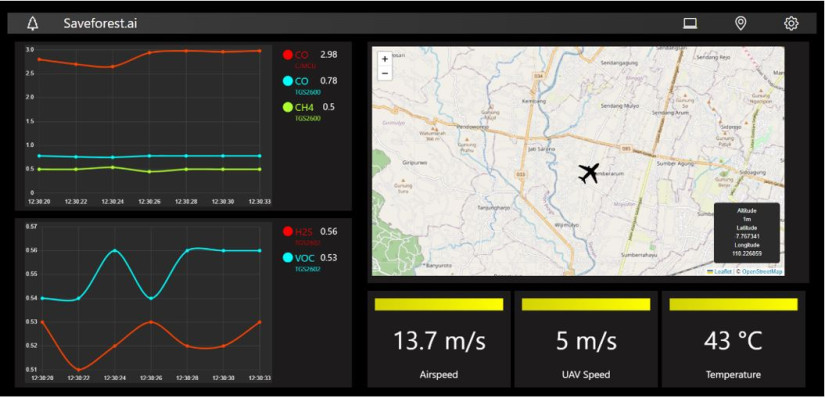
Five UGM students have developed an AI-based forest and land fire detection device named Saveforest.ai.
This device uses gas sensors and a thermal camera and was developed as a technological breakthrough aligned with Sustainable Development Goal (SDG) 13: Climate Action.
“Until now, forest and land fire management has been mainly done manually using binoculars or ground patrols due to limited resources and difficult terrain. Additionally, the use of satellite imagery is costly and slow in detecting smoke,” said team leader Muhammad Hasani (Electronics and Instrumentation 2020) on Friday (October 13).
In this project, Hasani teamed up with Fiana Eka Aprilia (Forestry 2020), Aisha Salsabilla (Electronics and Instrumentation 2020), Muhammad Luthfi Harwidjaya, and Diandra Rizky Yodatama (Electronics and Instrumentation 2021).
This team is part of the Student Creativity Program in the Intellectual Creation category under the guidance of Dr. Danang Lelono.
Hasani explained that this fire detection device enables early detection and independent monitoring. The device is expected to raise public awareness and encourage timely preventive actions.
“Ultimately, it will provide long-term benefits in reducing the ecological and economic impacts of forest and land fires,” he added.
Hasani described the Saveforest.ai prototype, an electronic nose combining a Teensy 4.0 microcontroller as the sensor data processor and a Raspberry Pi to run AI algorithms and send real-time data to a database server.
The device uses a thermal camera to detect hotspots, and gas sensors validate the occurrence of a fire and the type of soil burned.
The prototype will be connected to the web-based Saveforest.ai dashboard, created using NodeJs on the backend and ReactJs on the frontend.
Communication between the backend and frontend uses MQTT, allowing for a publish and subscribe system between the frontend and backend. Processed data will be displayed on the GCS dashboard for monitoring.
“Testing was conducted in three stages: ground testing for the E-Nose to ensure the sensors work properly, UAV flight testing, and coordination testing after combining the E-Nose and UAV devices,” he explained.
“The results of the Saveforest.ai test are quite good and even exceeded our expectations.”
The test results showed that the prototype can accurately detect gas and heat and send data directly to the monitoring dashboard.
Furthermore, implementing SaveForest.ai and ongoing research can drive advancements in artificial intelligence, particularly in environmental preservation and disaster management.
Author: Agung Nugroho

